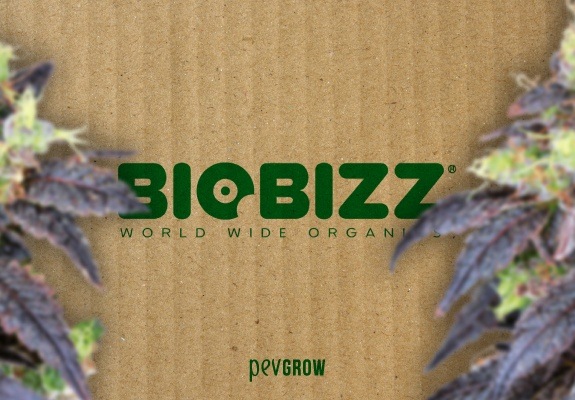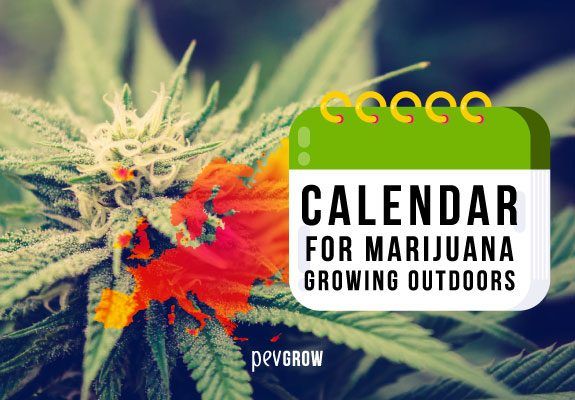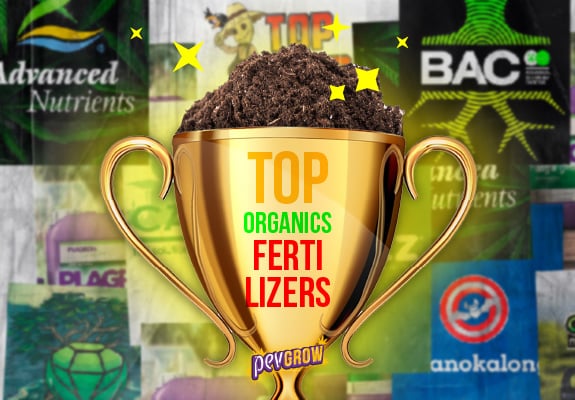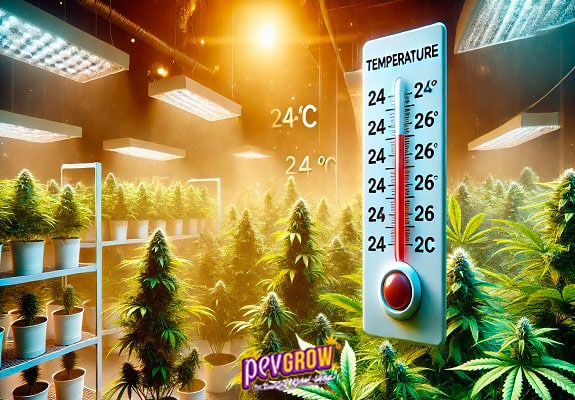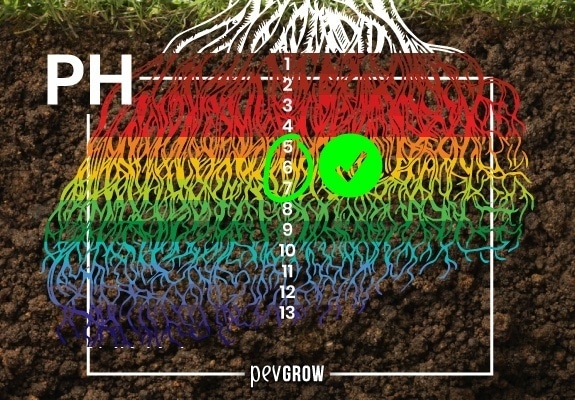

09-07-2024 09:15:37 - Updated: 9 July, 2024
As with people, maintaining an ideal PH in marijuana crops is crucial to ensure proper nutrition and development of the plants, and many times we do not give it the importance it has. For this reason we have seen fit to create this article in which we explain what it is and what are the best PH values for each stage of the crop, so I recommend that you read it carefully.
⭐ What is PH?
PH is the acronym for “hydrogen potential”, so it indicates the amount of hydrogen ions that a body or any aqueous solution contains, and measures its degree of acidity or alkalinity. The scale of PH values oscillates between 0 and 14, with 7 being the neutral PH, so any value below 7 is considered acidic, and between 7 and 14 it can be said to be alkaline.
The ideal PH for cannabis cultivation is between 5.5 and 7.0cannabis, varying depending on the type and phase of cultivation, since in “soilless” systems such as aeroponics or hydroponics it is better to apply more acid values than incrops. marijuana on land. It also is good to raise the PH as the plants go through the phase, because in growth they prefer it lower than in flowering. If it is still not very clear what PH is, do not worry, because I am sure that once you read this entry completely you will understand it perfectly.
⛳ How important is PH in marijuana crops?
It is super important, because plants need to absorb nutrients to develop normally, and in order to assimilate these nutrients they have to come with adequate PH values. If you add fertilizers to irrigation and it has an incorrect PH it is as if you prepare a soup and you do not have a spoon to eat it, remember this.
To ensure that the plants have an adequate PH in the root system, which is the one that has to absorb the nutrients, it is necessary to check the PH of the irrigation water they drink, because it is the one that can vary the soil values, which in the end is the most important.
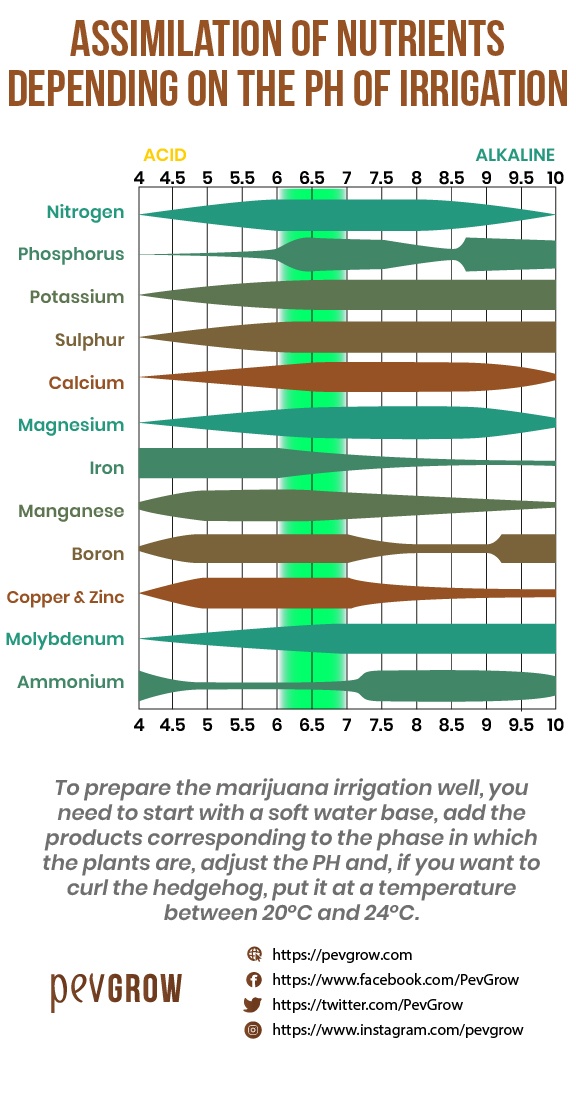
✨ How is PH measured?
The best way to check it is with an electronic PH meter, and you have many different brands and models to choose from, with very competitive prices like this one from Wassertech, or this one from the Adwa brand that we think has the best quality / price ratio. There are also the drop kits that are still cheaper in the short term, although they are not as reliable and it takes longer to measure the PH.
These meters are used to check the PH of the irrigation water, you just have to insert the probe they contain in case they are electronic, and with the drop kit you take a small sample, add a few drops, and compare the color with the scale that comes on the product itself.
Well, we already know the way to know the PH that our nutrient solution contains, but if you want to raise and lower it, you need acids or alkaline products that cause the PH fluctuation, they are sold as PH – or PH + and they are very cheap. If you want to see a homemade way to lower the PH with products that we all have on hand, I recommend you read this interesting article.(Here I would put a link to the news “How to lower the PH at home” that we have not published yet.)
👾 pH Values for Cannabis
The difference in ideal pH values for cannabis cultivation in soil, coco, and hydroponics is due to how each medium affects nutrient availability and plant absorption. Having a good pH meter is crucial to achieve the highest yield and quality of the plants. Here are the specific reasons for each type of cultivation:
Soil Cultivation:
- Soil Nature: Soil is a complex medium containing minerals, organic matter, and microorganisms that interact with each other. The ideal pH range (6.0-7.0) for soil cultivation ensures that nutrients are available in the proper form for plant absorption.
- Nutrient Retention: Soil has a buffering capacity that helps maintain stable pH, allowing greater flexibility in the pH of irrigation water without significantly affecting soil pH.
Coco Cultivation:
- Inert Medium: Coco is an inert growing medium with a lower buffering capacity than soil, meaning the pH of the irrigation water has a more direct impact on the pH of the growing medium.
- pH Range: The ideal range (5.8-6.0) for coco is slightly below that of soil because certain nutrients, such as calcium and magnesium, are more available in this specific pH range in an inert medium.
Hydroponic Cultivation:
- Soilless Medium: In hydroponic systems, the roots are in direct contact with the nutrient solution. This means that nutrient availability depends entirely on the pH of the solution.
- Direct Absorption: The ideal pH range (5.5-6.0) is lower than in soil or coco because many essential nutrients for plant growth, such as nitrogen, phosphorus, and potassium, are more soluble and available in this range in aqueous solutions.
Additional Reasons:
- Nutrient Availability: Each medium has a different capacity to retain and release nutrients. In soil, some nutrients may be more available in a broader pH range due to their interaction with the soil complex. In coco and hydroponics, nutrient availability is more directly influenced by the pH of the nutrient solution.
- Microbiology: Soil microbiology can influence the need for a different pH range. Beneficial soil microorganisms function better in a pH range that may not be ideal for hydroponics or coco.
- Buffering Capacity: Soil has a greater capacity to buffer pH changes, which does not occur in hydroponics, where pH can fluctuate rapidly and must be monitored and adjusted more frequently.
👌 Cannabis pH Value Table
| Week | Stage | Soil pH | Coco pH | Hydroponics pH |
|---|---|---|---|---|
| 1 | Growth | 6.0 | 5.8 | 5.5 |
| 2 | Growth | 6.0 | 5.8 | 5.5 |
| 3 | Growth | 6.0 | 5.8 | 5.5 |
| 4 | Growth | 6.0 | 5.8 | 5.5 |
| 5 | Flowering | 6.2 | 6.0 | 5.8 |
| 6 | Flowering | 6.2 | 6.0 | 5.8 |
| 7 | Flowering | 6.2 | 6.0 | 5.8 |
| 8 | Flowering | 6.2 | 6.0 | 5.8 |
| 9 | Flowering | 6.2 | 6.0 | 5.8 |
| 10 | Flowering | 6.2 | 6.0 | 5.8 |
| 11 | Flowering | 6.2 | 6.0 | 5.8 |
| 12 | Flowering | 6.2 | 6.0 | 5.8 |
| 13 | Flowering | 6.2 | 6.0 | 5.8 |
| 14 | Flowering | 6.2 | 6.0 | 5.8 |
🚀 Conclusions
In conclusion, the pH of the growing medium is a critical factor for the healthy and productive growth of cannabis plants. Each type of cultivation—soil, coco, and hydroponics—requires a specific pH range due to differences in nutrient availability, buffering capacity, and microbiological interactions. Keeping the pH within the ideal range for each medium ensures that plants can efficiently absorb essential nutrients, avoiding deficiency or toxicity problems. Therefore, regular monitoring and precise pH adjustments are essential to maximize the yield and quality of cannabis cultivation in any type of medium.
✅ Pevgrow’s Opinion
In general, watering cannabis with an ideal pH is not given the importance it deserves, especially maintaining a correct pH in the substrate throughout the entire cultivation. It is important to understand that if we do not adjust the pH properly, the plant roots will not be able to assimilate nutrients correctly, leading to nutritional problems such as deficiencies, excesses, or nutrient lockouts. This often causes a bigger problem because attempts to correct the imbalance by adding more nutrients usually worsen the issue. Now that you know how important it is to adjust the pH, don’t miss this other article explaining how to lower the pH in cannabis cultivation.
🎯 Frequently Asked Questions
What happens if we water cannabis with a pH that is too low?
Watering cannabis with a pH that is too low can have several negative consequences on the plant’s growth and health. Here are some of the main repercussions:
- Nutrient Lockout: A low pH can prevent the plant from absorbing certain essential nutrients like calcium, magnesium, and phosphorus, leading to nutritional deficiencies.
- Nutrient Toxicity: At low pH levels, some nutrients like manganese and aluminum can become more soluble and reach toxic levels, damaging the roots and the plant overall.
- Root Damage: An overly acidic pH can damage the roots, affecting their ability to absorb water and nutrients and, in extreme cases, killing the roots.
- Stunted Growth: Plants may show slower and stunted growth due to the lack of availability of essential nutrients.
- Flowering Issues: During the flowering phase, an incorrect pH can affect the formation and quality of the flowers, reducing the yield and potency of the crop.
- Chlorosis: Leaves may turn yellow due to chlorosis, a condition caused by the inability to absorb iron properly, common in acidic soils.
To avoid these problems, it is important to regularly monitor the pH of the irrigation water and the growing medium, adjusting it as necessary to keep it within the optimal range for cannabis.
What happens if we water cannabis with a pH that is too high?
Watering cannabis with a pH that is too high can also cause several problems that affect the plant’s health and growth. Here are the main consequences:
- Nutrient Lockout: A high pH can block the absorption of essential nutrients like iron, manganese, zinc, and copper. This can lead to nutritional deficiencies in the plant.
- Nutritional Deficiencies: The lack of nutrient absorption due to elevated pH can cause deficiency symptoms, such as yellow leaves (chlorosis), slow growth, and leaf spots.
- Growth Issues: Plants may show stunted and slow growth. New leaves may appear pale or yellow, and plants may become more susceptible to diseases and pests.
- Low Flower Production: During the flowering phase, elevated pH can negatively affect flower production and quality, resulting in lower yield and potency.
- Plant Stress: Plants may experience stress, making them more vulnerable to adverse environmental factors and diseases.
- Nutrient Imbalance: A high pH can cause an imbalance in nutrient availability, affecting the overall health of the plant and its ability to grow optimally.
To avoid these problems, it is crucial to keep the pH of the irrigation water and the growing medium within the optimal range for cannabis. Regularly monitoring the pH and adjusting it as necessary helps ensure that plants receive the nutrients needed for healthy growth and abundant production.
What is the ideal pH value for germinating cannabis seeds?
The ideal pH for germinating cannabis seeds is in a slightly acidic range, between 5.8 and 6.2. Keeping the pH within this range during germination is crucial to ensure that seeds can absorb water and nutrients effectively, facilitating their initial development.
Recommendations for Germination:
- Germination Medium: Use a quality substrate, such as coco fiber, peat, or a specific germination medium for cannabis, with a pH adjusted within the ideal range.
- Irrigation Water: Ensure that the water used to moisten the seeds and the germination medium has a pH between 5.8 and 6.2.
- pH Monitoring: Regularly check the pH of the water and the germination medium to ensure it remains within the optimal range.
What is the ideal pH for seedlings?
For cannabis seedlings, the ideal pH remains important to ensure healthy development and optimal nutrient absorption. The ideal pH range for cannabis seedlings is slightly acidic, similar to germination, but with a slight variation to meet their growing needs.
Ideal pH Range for Cannabis Seedlings:
- Soil: 6.0 – 6.5
- Coco: 5.8 – 6.0
- Hydroponics: 5.5 – 6.0
Should the pH of the water be measured before or after adding fertilizers?
Always after adding fertilizers and other additives to the irrigation water, because these products can cause a pH fluctuation, usually downward. In fact, if you have leftover nutrient solution and plan to use it later, I recommend readjusting the pH, as it is likely to have changed.

